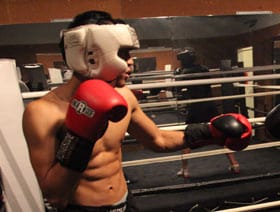Jared Traveler
2nd Black Belt
When first you don't succeed, try again...
One of the simplest combinations is to just repeat the technique. If you try a hip throw and you aren't successful, try to hit it again. Usually it ends up being a more powerful hip throw than the first one would have been.
If your body kick fails, fire off a second kick. Regardless if you are taking about a double cross, throwing two horizontal elbows, or attempting two identical throws, using the double tap method is a simple strategy that can be very successful.
Certainly it isn't the most advanced combination, but simply repeating the technique you just tried is easy to remember under stress and can work quite well.
What do you all think. Do you train this on focus mitts? Do you use this in wrestling, judo or whatever?
One of the simplest combinations is to just repeat the technique. If you try a hip throw and you aren't successful, try to hit it again. Usually it ends up being a more powerful hip throw than the first one would have been.
If your body kick fails, fire off a second kick. Regardless if you are taking about a double cross, throwing two horizontal elbows, or attempting two identical throws, using the double tap method is a simple strategy that can be very successful.
Certainly it isn't the most advanced combination, but simply repeating the technique you just tried is easy to remember under stress and can work quite well.
What do you all think. Do you train this on focus mitts? Do you use this in wrestling, judo or whatever?

